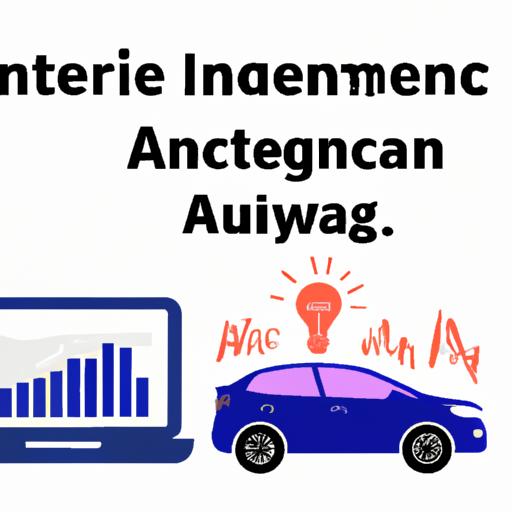In the intricate world of auto insurance, the game-changer comes in the form of predictive analytics. Imagine a future where accidents are not just inevitable occurrences but preventable events. Through the power of data analysis and advanced technology, predictive analytics is revolutionizing the way insurance companies identify and assess risk factors, ultimately helping to prevent accidents before they even happen. Join us as we delve into the fascinating world of predictive analytics for accident prevention in auto insurance.
Table of Contents
- 1. The Power of Predictive Analytics in Auto Insurance
- 2. Harnessing Data for Accident Prevention
- 3. How Predictive Models are Transforming the Insurance Industry
- 4. Predictive Analytics: A Game-Changer for Safety on the Roads
- 5. Preventing Accidents Before They Happen: The Future of Auto Insurance
- 6. The Role of Technology in Predicting and Preventing Auto Accidents
1. The Power of Predictive Analytics in Auto Insurance
Predictive analytics has revolutionized the auto insurance industry, allowing companies to analyze vast amounts of data to make more accurate predictions and better decisions. By leveraging advanced algorithms and machine learning, insurers can now assess risk factors and customer behaviors to tailor policies and pricing accordingly.
With predictive analytics, auto insurance companies can:
- Identify potential fraud: Using predictive modeling, insurers can flag suspicious claims and activity, helping to minimize losses from fraudulent behavior.
- Personalize policies: By analyzing customer data, insurers can create customized policies that meet the unique needs of individual drivers, leading to increased customer satisfaction and loyalty.
- Improve risk assessment: Predictive analytics allows insurers to better understand risk factors and predict future claims, enabling them to adjust premiums and coverage to mitigate potential losses.

2. Harnessing Data for Accident Prevention
Accident prevention is a crucial aspect of ensuring safety in any environment. By harnessing data effectively, organizations can identify potential risks and implement measures to mitigate them. One way to achieve this is by analyzing historical accident data to identify patterns and trends that can help in predicting and preventing future accidents.
Utilizing real-time data from sensors and monitoring systems can also play a significant role in accident prevention. By continuously monitoring key metrics such as temperature, pressure, and speed, organizations can detect abnormalities and potential hazards before they escalate into accidents. This proactive approach to data analysis enables organizations to take timely action and prevent accidents before they occur, ultimately creating a safer environment for all.
3. How Predictive Models are Transforming the Insurance Industry
From calculating risk assessment to personalizing policies, predictive models have revolutionized the insurance industry in ways we never thought possible. By harnessing the power of data analytics and machine learning, insurance companies are now able to accurately predict potential risks and tailor their services to meet the unique needs of their customers.
With the help of predictive models, insurers can now:
- Customize Policies: By analyzing a customer’s data and behavior, insurers can create personalized insurance plans that cater to their specific needs.
- Reduce Fraud: Predictive models can identify suspicious claims and potential fraud, helping insurers save money and maintain the integrity of their services.
- Improve Customer Satisfaction: By offering tailored policies and fast claim processing, insurance companies can enhance the overall customer experience and build long-lasting relationships.
4. Predictive Analytics: A Game-Changer for Safety on the Roads
Predictive analytics has revolutionized the way safety is ensured on our roads. By analyzing vast amounts of data, this technology has the capability to predict potential hazards before they even occur. Through the use of sophisticated algorithms, patterns can be identified to forecast potential accidents and take preventive measures. This proactive approach allows for quicker responses and can ultimately save lives.
With the implementation of predictive analytics, authorities can prioritize areas with higher risks, allocate resources effectively, and develop targeted safety measures. Real-time monitoring coupled with historical data analysis provides a comprehensive understanding of traffic patterns, behaviors, and potential dangers. This valuable information not only enhances decision-making processes but also enables continuous improvement in road safety initiatives. Embracing predictive analytics is truly a game-changer in ensuring the safety of all road users.
5. Preventing Accidents Before They Happen: The Future of Auto Insurance
One of the most exciting developments in the auto insurance industry is the emergence of advanced safety technologies that aim to prevent accidents before they even occur. From adaptive cruise control to lane departure warning systems, vehicles are equipped with features that help drivers navigate the road more safely. These technologies not only make driving safer for individuals, but also have the potential to lower insurance premiums by reducing the likelihood of accidents.
Additionally, insurers are beginning to explore the use of telematics devices that track driving habits in real-time. By analyzing data on factors such as speed, braking, and acceleration, insurers can tailor policies to individual drivers based on their actual driving behavior. This shift towards usage-based insurance has the potential to revolutionize the industry, rewarding safe drivers with lower premiums while incentivizing others to improve their driving habits to save money.
6. The Role of Technology in Predicting and Preventing Auto Accidents
Technology plays a crucial role in predicting and preventing auto accidents by providing innovative solutions that improve road safety. One such advancement is the development of **collision detection systems**, which use sensors and cameras to alert drivers of potential dangers on the road. These systems can accurately predict and warn drivers of imminent collisions, giving them crucial seconds to react and avoid accidents.
Additionally, **autonomous vehicles** are revolutionizing the way we think about road safety. By incorporating artificial intelligence and machine learning algorithms, these vehicles have the potential to eliminate human error, which is a leading cause of auto accidents. With the ability to predict and avoid hazardous situations in real-time, autonomous vehicles hold the promise of significantly reducing the number of accidents on the road.
predictive analytics is revolutionizing the way auto insurance companies approach accident prevention. By harnessing the power of data and analytics, insurers can identify risk factors, assess probabilities, and take proactive measures to mitigate accidents. This not only benefits the insurance companies themselves by reducing payouts and improving profitability, but also helps create safer roads for everyone. By leveraging predictive analytics, the future of auto insurance is looking brighter than ever. So, buckle up and embrace the power of data in keeping you safe on the road.
